The Pythagorean Theorem -> graphing
Graphing
What is graphing?
Graphing is the process of representing data or functions visually using graphs or charts. In mathematics, graphing is often used to show the relationship between two variables or to represent functions.
Types of Graphs
There are several types of graphs commonly used in mathematics:
- Line Graphs: Used to show the relationship between two variables by connecting data points with straight lines.
- Bar Graphs: Used to compare different categories of data by using rectangular bars of varying lengths.
- Pie Charts: Used to show the parts of a whole by dividing a circle into sectors.
- Scatter Plots: Used to display the relationship between two sets of data by plotting points on a coordinate plane.
Graphing Linear Equations
When graphing linear equations, the standard form y = mx + b is often used. Here, m represents the slope of the line, and b represents the y-intercept.
To graph a linear equation, follow these steps:
- Identify the y-intercept (b) and plot the point (0, b).
- Use the slope (m) to find another point on the line. For example, if the slope is 2, move up 2 units and right 1 unit from the y-intercept and plot another point.
- Draw a straight line through the two points to represent the graph of the linear equation.
Study Guide for Graphing
To effectively study graphing, consider the following tips:
- Understand the different types of graphs and when each type is used.
- Practice plotting points on a coordinate plane to become familiar with graphing linear equations.
- Learn how to calculate and interpret the slope of a line.
- Review how to find and plot the y-intercept of a linear equation.
- Work on interpreting graphs and extracting information from them.
By mastering the concepts and skills related to graphing, you'll be able to effectively represent data and functions visually, helping you solve mathematical problems more easily.
.◂Math Worksheets and Study Guides Seventh Grade. The Pythagorean Theorem
Study Guide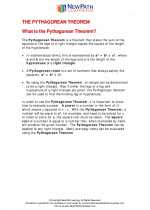 The Pythagorean Theorem
The Pythagorean Theorem  Study Guide
Study Guide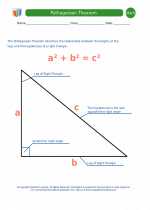 Pythagorean Theorem Definitions
Pythagorean Theorem Definitions  Worksheet/Answer key
Worksheet/Answer key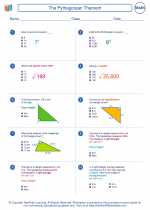 The Pythagorean Theorem
The Pythagorean Theorem  Worksheet/Answer key
Worksheet/Answer key The Pythagorean Theorem
The Pythagorean Theorem  Worksheet/Answer key
Worksheet/Answer key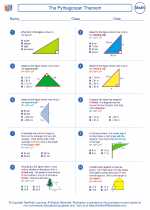 The Pythagorean Theorem
The Pythagorean Theorem  Worksheet/Answer key
Worksheet/Answer key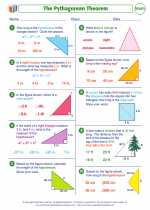 The Pythagorean Theorem
The Pythagorean Theorem  Worksheet/Answer key
Worksheet/Answer key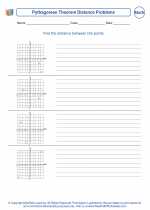 Pythagorean Theorem Distance Problems
Pythagorean Theorem Distance Problems  Worksheet/Answer key
Worksheet/Answer key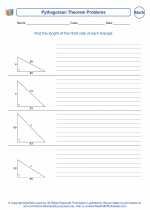 Pythagorean Theorem Problems
Pythagorean Theorem Problems  Worksheet/Answer key
Worksheet/Answer key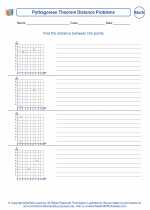 Pythagorean Theorem Distance Problems
Pythagorean Theorem Distance Problems  Worksheet/Answer key
Worksheet/Answer key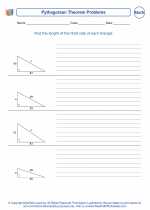 Pythagorean Theorem Problems
Pythagorean Theorem Problems  Worksheet/Answer key
Worksheet/Answer key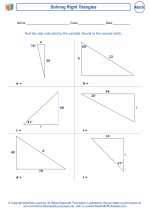 Solving Right Triangles
Solving Right Triangles  Worksheet/Answer key
Worksheet/Answer key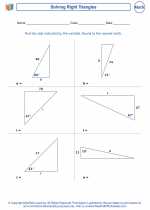 Solving Right Triangles
Solving Right Triangles 

 Study Guide
Study Guide
 Worksheet/Answer key
Worksheet/Answer key
 Worksheet/Answer key
Worksheet/Answer key
 Worksheet/Answer key
Worksheet/Answer key
 Worksheet/Answer key
Worksheet/Answer key
 Worksheet/Answer key
Worksheet/Answer key
 Worksheet/Answer key
Worksheet/Answer key
 Worksheet/Answer key
Worksheet/Answer key
 Worksheet/Answer key
Worksheet/Answer key
 Worksheet/Answer key
Worksheet/Answer key
 Worksheet/Answer key
Worksheet/Answer key

The resources above cover the following skills:
Geometry (NCTM)
Analyze characteristics and properties of two- and three-dimensional geometric shapes and develop mathematical arguments about geometric relationships.
Create and critique inductive and deductive arguments concerning geometric ideas and relationships, such as congruence, similarity, and the Pythagorean relationship.